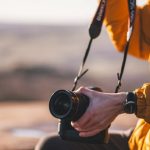
Amidst the chaos, the festival’s symbolic centerpiece, the Man Burn, was postponed before finally taking place. The photographers’ commitment shines a light on the fine line between artistic pursuit and personal risk during times of crisis.
What Is Going On At The Burning Man?

Drawing more than 70,000 attendees from across the globe each year, the festival presents a unique challenge as participants converge upon this barren landscape, usually confronted by fine dust rather than rain and mud.
Situated at a considerable distance from major urban centers, the nearest being Reno, Nevada, over 100 miles away, access to Burning Man involves traversing either a two-lane rural highway leading to the festival’s entrance or utilizing the festival’s small, temporary airport.
The recent bout of rain resulted in the temporary closure of the route to and from Burning Man. Nevertheless, the organizers of the event opted to reopen the road on Monday around midday. Despite this, numerous travelers continued to face difficulties on their prolonged journey away from the festival site. Even under normal circumstances, leaving the location can demand up to 12 hours, as a multitude of vehicles inch their way across the desert and onto the road. As of early Tuesday, the expected wait time was approximately eight hours.
The inclement weather conditions also posed challenges for event coordinators attempting to relocate substantial equipment, including crucial resources for fire safety, to the designated area for the eagerly awaited Man Burn. Regrettably, due to these impediments, the culmination of the festival, the symbolic burning of the wooden effigy representing its core ethos, was postponed twice. Eventually, the festival’s centerpiece was set ablaze on Monday night, marking a poignant conclusion to the event.
Photographers Decided To Stay

Amidst the logistical challenges and the exodus of attendees striving to depart the event, a group of dedicated photographers chose to defy the odds. Rather than joining the stream of departing vehicles, these photographers remained steadfast, some even making the journey back into the festival grounds. Their primary objective? To encapsulate the extraordinary scenes and moments that unfold amid the chaos and transformation brought about by the weather. With an unwavering commitment to their craft, these individuals captured images that narrated the festival’s unique story, focusing on the convergence of nature’s elements and human creativity.
As the rain-drenched environment posed difficulties for many, these photographers saw an opportunity to document the festival’s altered state, creating a visual narrative that conveyed the resilience and spirit of both the event and its attendees. This dedication to their artistic pursuit highlights the lengths to which some are willing to go, even when faced with challenging circumstances, to capture a glimpse of the extraordinary.
Is It Worth It?
However, the decision of these photographers to brave the hazardous conditions raises significant concerns about the appropriateness of their actions. While their dedication to capturing unique visuals is commendable, it’s essential to acknowledge the potential dangers they are exposing themselves to.
The festival site’s flooded and muddy terrain, compounded by the challenges of unpredictable weather, presents risks not only to the photographers themselves but also to the safety personnel who might need to divert resources to assist them in case of emergencies. The pursuit of art is undoubtedly a noble endeavor, but when it involves jeopardizing one’s well-being and diverting valuable resources from critical operations, it calls for a reconsideration of the ethics surrounding such decisions.

Camera Tester & Reviewer
I spend most of my time taking photos & videos of everything in sight. Yes, I am a stock photographer and I’ve probably taken more than 700,000 photos so far.



